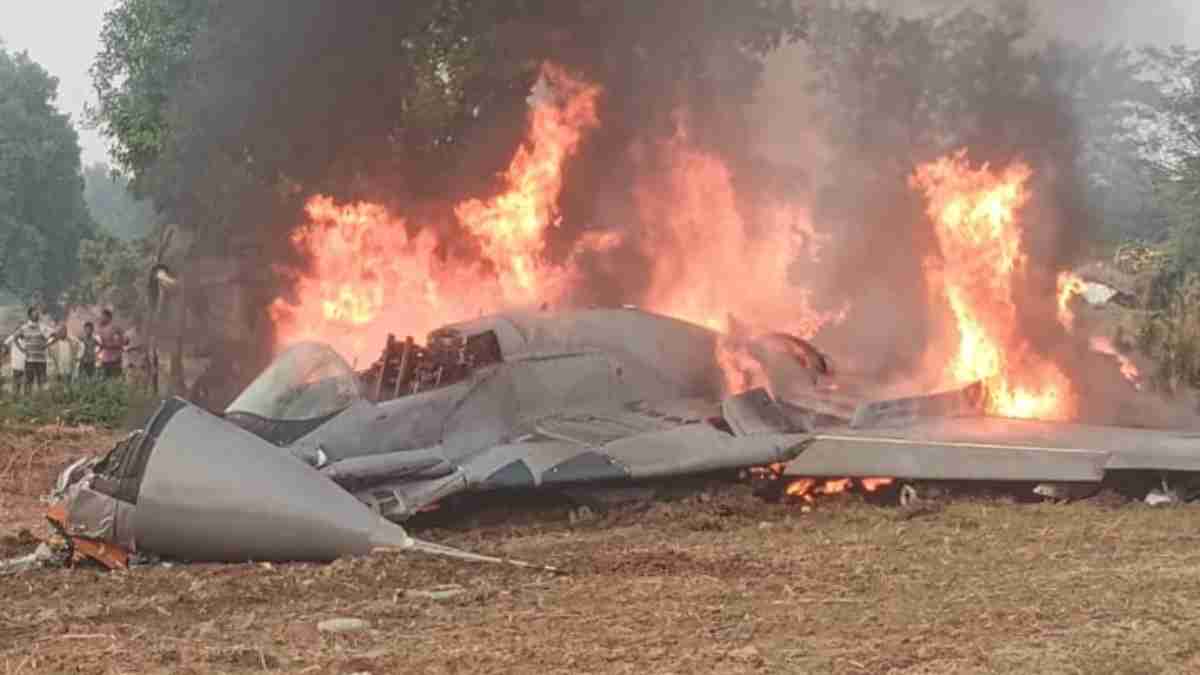A MiG-29 fighter jet of the Indian Air Force crashed today near Agra, Uttar Pradesh, with the pilot successfully ejecting from the aircraft.
#Breaking A MiG-29 fighter jet has crashed near Agra, Uttar Pradesh. The pilot has ejected from the plane. The plane had taken off from Adampur in Punjab and was en route to Agra for an exercise when the incident happened. More details awaited. Court of Inquiry to be ordered. pic.twitter.com/DUHiiHhVmM
---Advertisement---— Sanjay Jha (@JhaSanjay07) November 4, 2024
Crash Details
Visuals from the scene depict the aircraft engulfed in flames in an open field located in Songa village, with onlookers standing at a safe distance from the burning wreckage. Some individuals were seen holding equipment resembling an ejection seat, indicating that the pilot’s escape mechanism functioned effectively.
Investigation Underway
The cause of the crash remains unclear, and the Indian Air Force has not yet released a statement regarding the incident.
MiG-29 Fighter Jet Overview
The MiG-29, known by its NATO designation ‘Fulcrum’ and referred to as ‘Baaz’ in India, is an air superiority fighter jet that originated in Soviet Russia and was inducted into the Indian Air Force in 1987. The aircraft has a relatively good safety record, and reports indicate that the jet involved in today’s incident was an upgraded version, the MiG-29 UPG.
Also Read: ‘Withdraw Or Face Action’, Maha Vikas Aghadi Issues 1-Hour Ultimatum To Rebels
Recent Crash History
This marks the second MiG-29 crash within the last two months. In September, another MiG-29 experienced a technical issue during a routine night sortie in Barmer, Rajasthan, resulting in a crash, though the pilot ejected safely in that instance as well.
Ejection Seat Technology
The MiG-29 is equipped with the Zvezda K-36D zero-zero ejection seat, recognized as one of the most advanced ejection systems globally. This seat is also utilized in the Air Force’s Su-30MKI fighter jets. The zero-zero capability allows pilots to eject safely from a stationary position, even at zero altitude and speed, which is crucial during low-altitude or low-speed flight emergencies, including ground mishaps during takeoff or landing.
The technology was inspired by Martin-Baker’s zero-zero ejection seats developed in the West, which subsequently influenced Soviet designs. The indigenous Tejas fighter jet also features a similar ejection seat system, highlighting the advancements in pilot safety equipment in modern military aviation.













